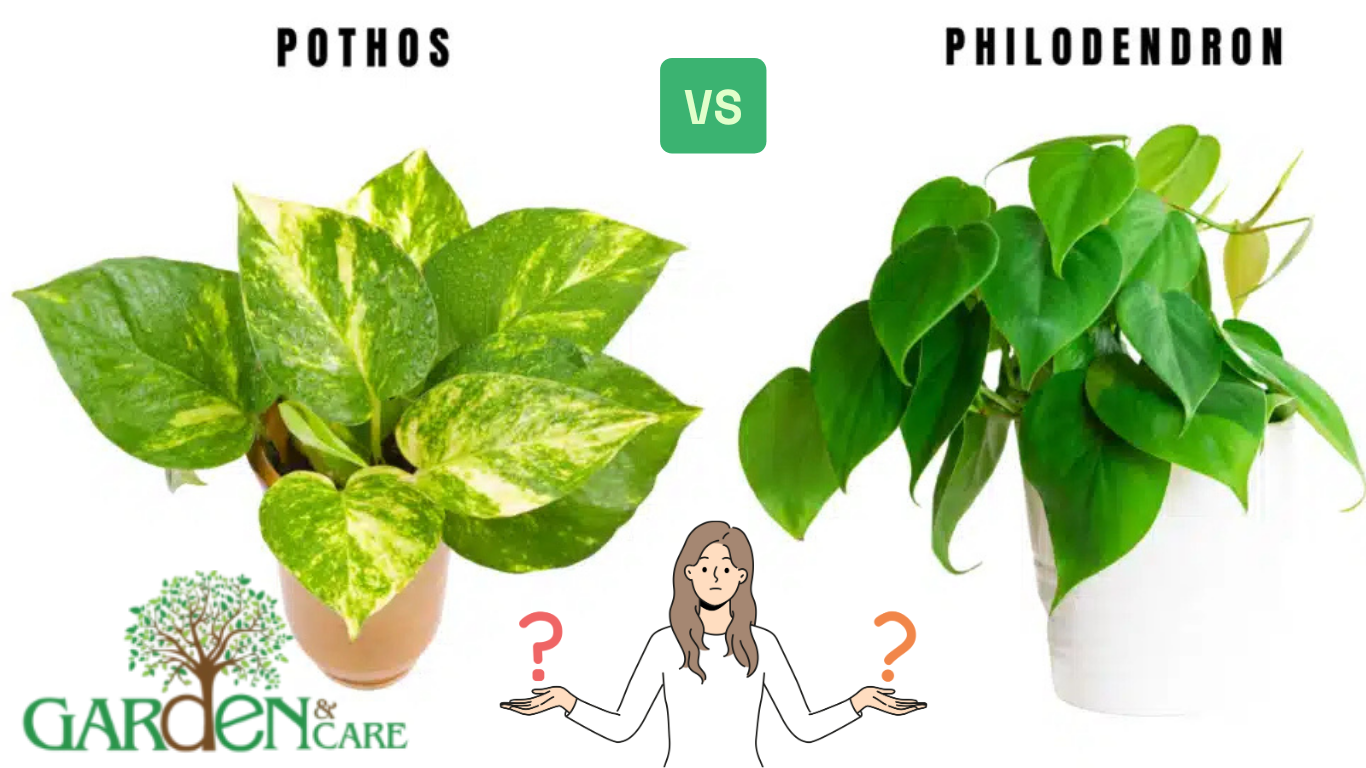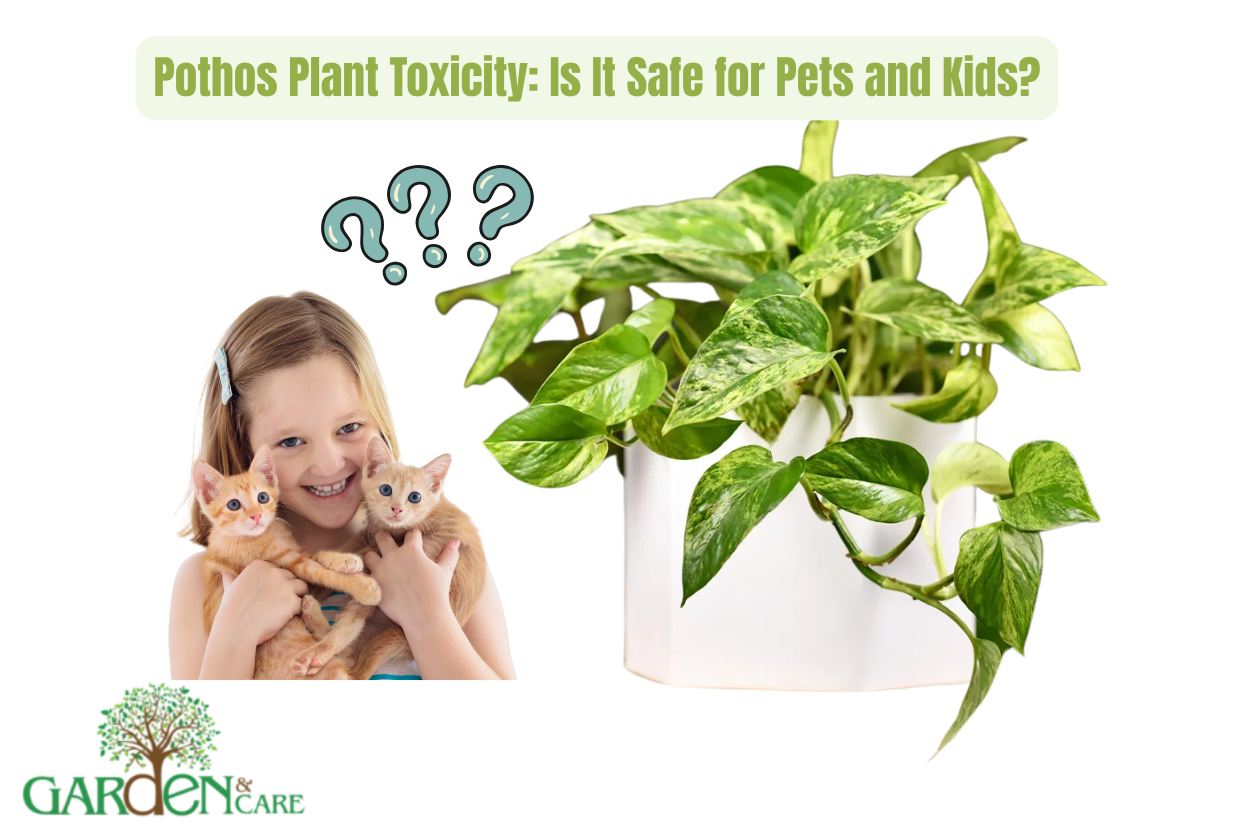Introduction
- Pothos and Philodendrons are two of the most popular and easy-to-care-for houseplants around the world. Their beautiful green leaves and low maintenance needs make them favorites for both beginners and experienced plant lovers.
- Many people often get confused between Pothos and Philodendron because they look quite similar at first glance. This confusion can make it hard to decide which plant is best for your home or office.
- In this article, we will clearly explain the main differences between Pothos and Philodendron. You will also learn which plant suits your lifestyle and space better, helping you make the right choice for your indoor garden.
Botanical Background
Both Pothos and Philodendron plants belong to the aroid family, scientifically called Araceae. This means they share some similarities in their structure and growing habits.
However, they belong to different groups called genera. The Pothos is part of the Epipremnum genus, while the Philodendron belongs to the Philodendron genus. This difference affects their leaf shapes, growth patterns, and how they respond to care.
Knowing the difference between these two plants is important. It helps you give each plant the right amount of water, light, and space. It also guides you in styling them well in your home, whether you want them to climb or trail.
Leaf Shape and Appearance
One of the easiest ways to tell a Pothos from a Philodendron is by looking closely at their leaves.
Pothos leaves are usually more elongated and have a waxy texture. They tend to feel thicker and a bit shiny. The tips of the leaves are more pointed and the overall shape is less heart-like.
On the other hand, Philodendron leaves are generally heart-shaped with a softer, smoother texture. They feel thinner and more delicate compared to Pothos leaves. The heart shape is quite clear, especially when you see the leaf up close.
If you place both plants side by side, you will notice the Pothos leaves look longer and shinier, while Philodendron leaves are rounder and softer. This visual difference is a quick and reliable way to tell them apart.
Texture and Feel of Leaves
Another simple way to tell Pothos and Philodendron apart is by touching their leaves.
Pothos leaves are generally thick and have a waxy feel. This waxy coating makes the leaves look shiny and helps the plant retain moisture.
In contrast, Philodendron leaves are usually thinner and have a smooth, soft texture. When you touch them, they feel more delicate and less shiny compared to Pothos leaves.
By feeling the difference in leaf texture, you can quickly identify which plant you have without needing to look closely at other features.
Leaf Attachment and Petiole Characteristics
Looking at how the leaves connect to the stem—also known as the petiole—can help you tell the difference between Pothos and Philodendron plants.
Pothos have:
- Straighter leaf tips where the leaf joins the stem.
- Thicker petioles (the small stems that attach each leaf to the main vine). These petioles often have a slight groove or curve that points the leaf back toward the vine.
Philodendrons have:
- A heart-shaped indent at the base of each leaf where it meets the stem.
- Rounded petioles that are smoother and more uniform in shape.
These small details make it easier to identify your plant just by taking a closer look at how the leaves are attached.
Aerial Roots
Aerial roots are small root-like structures that grow from the stem and help vining plants attach to surfaces and absorb moisture from the air. They can be a helpful way to tell the difference between Pothos and Philodendron.
Pothos:
- Usually have one larger aerial root per node (a node is the spot where leaves and roots grow).
- The aerial root looks thick and strong, and it helps the plant climb or trail easily.
Philodendrons:
- Often grow multiple smaller aerial roots from each node.
- These roots can look wild or messy compared to the neater root structure of Pothos.
So, if you see a plant with several thin aerial roots at each node, it’s likely a Philodendron. A single, thick root per node is a sign of a Pothos.
New Leaf Growth and Cataphylls
Another helpful way to tell Pothos and Philodendrons apart is by watching how new leaves grow.
Philodendrons:
- New leaves on Philodendrons are protected by a cataphyll, which is a thin, papery sheath that wraps around the baby leaf as it develops.
- This cataphyll often dries out and falls off once the leaf fully opens.
- It’s a key trait of Philodendrons and can help you identify them.
Pothos:
- Pothos do not have cataphylls.
- Their new leaves grow directly from the previous leaf node without any protective sheath.
How to Observe:
- Look closely at a new leaf forming.
- If there’s a visible, protective sheath or papery cover, it’s most likely a Philodendron.
- If the new leaf seems to unfurl naturally from the stem without a sheath, you’re probably looking at a Pothos.
This subtle detail is easy to spot once you know what to look for and can help even beginners tell the difference between these two popular plants.
Care Requirements: Similarities and Differences
Pothos and Philodendrons are both popular because they’re easy to care for, but there are a few differences that can help you choose the best plant for your space and routine.
Light Needs
- Pothos are more tolerant of low light and can still grow well in darker corners.
- Philodendrons prefer moderate to bright, indirect light and may become leggy if kept in low-light conditions for too long.
Watering and Drought Tolerance
- Pothos are more drought-tolerant. They can go longer between waterings without showing signs of stress.
- Philodendrons like slightly more consistent moisture and may wilt sooner if the soil dries out completely.
Soil Preferences
- Both plants thrive in rich, well-draining, and airy potting soil.
- A mix that includes peat, perlite, and bark works well for both Pothos and Philodendrons.
Ease of Propagation
- Both are easy to propagate through stem cuttings.
- However, Pothos are often a bit quicker and more reliable to root in water or soil.
If you want a plant that’s a bit more forgiving and suited for lower light, Pothos is a great choice. If you love heart-shaped leaves and can offer brighter indirect light, Philodendrons are perfect too!
Choosing Between Pothos and Philodendron
Not sure which plant is right for you? Here are some easy tips to help you decide between Pothos and Philodendron based on your lifestyle, space, and preferences.
Which Plant Is Better for Beginners?
- Pothos is often recommended for beginners because it’s more drought-tolerant and hardier in low-light areas.
- Philodendrons are also easy to care for, but they may need slightly more attention to stay full and healthy.
Consider Your Home Environment
- If your home has limited sunlight or you tend to forget watering, go with Pothos.
- If you can offer bright, indirect light and check your plants regularly, Philodendron will do well.
Think About Style and Growth Habit
- Pothos usually has longer, thicker vines and a waxy leaf texture—perfect for a bold, trailing look in hanging baskets or shelves.
- Philodendrons have softer, heart-shaped leaves and a gentler, romantic vibe—ideal for climbing displays or elegant planters.
No matter which one you choose, both plants are beautiful, easy-going, and make great indoor companions. If you can’t decide, why not get one of each?
Conclusion
Pothos and Philodendrons may look alike at first, but they have clear differences in their leaf shape, texture, aerial roots, and care needs.
- Pothos leaves are more waxy, thicker, and often more tolerant of low light and dry conditions.
- Philodendron leaves are softer, heart-shaped, and prefer brighter light and a bit more moisture.
Both plants are easy to grow and care for, making them perfect for beginners and experienced plant lovers alike.
Choose the plant that best fits your space, lighting, and watering habits. Whether you want the tougher, trailing charm of a Pothos or the softer, graceful look of a Philodendron, you can’t go wrong.
🌿 Have both? Even better—mix them into your plant collection for a beautiful contrast!
FAQs
1. How to quickly identify Pothos vs. Philodendron?
Look at the leaf shape and texture. Pothos leaves are usually thicker, waxy, and more elongated, while Philodendron leaves are softer, thinner, and have a heart-like shape with a noticeable indent at the base.
2. Do both plants climb?
Yes, both Pothos and Philodendrons are vining plants that can trail or climb. You can train them to climb with the help of moss poles, trellises, or wall hooks, or let them trail naturally from shelves or hanging planters.
3. Which plant is easier to care for?
Pothos is slightly easier to care for, especially for beginners. It handles dry soil and low light better than most Philodendrons, making it a more forgiving plant if you forget to water or have less sunlight.
4. What are cataphylls and why are they important?
Cataphylls are thin, leaf-like sheaths found on Philodendrons. They protect new leaves as they grow. Pothos plants don’t have cataphylls, so spotting them is one easy way to tell the two plants apart.
5. Can Pothos grow in low light better than Philodendrons?
Yes, Pothos are more low-light tolerant. They can survive in darker corners of your home better than most Philodendron varieties. However, both plants thrive best in bright, indirect light.




Leave a Reply